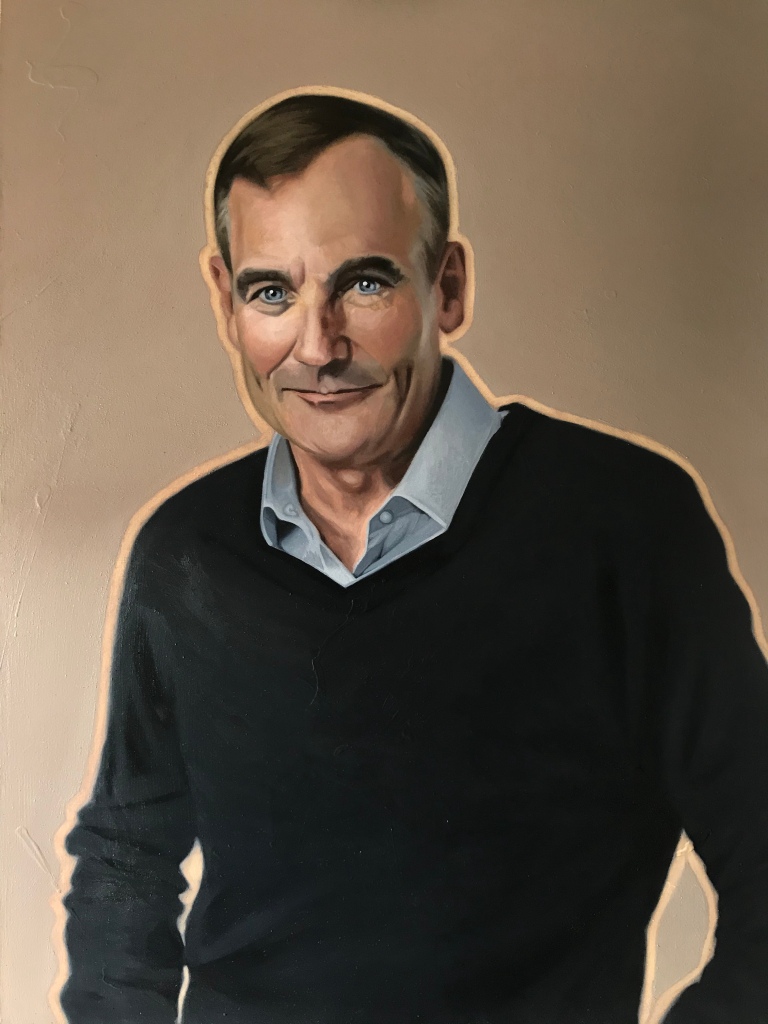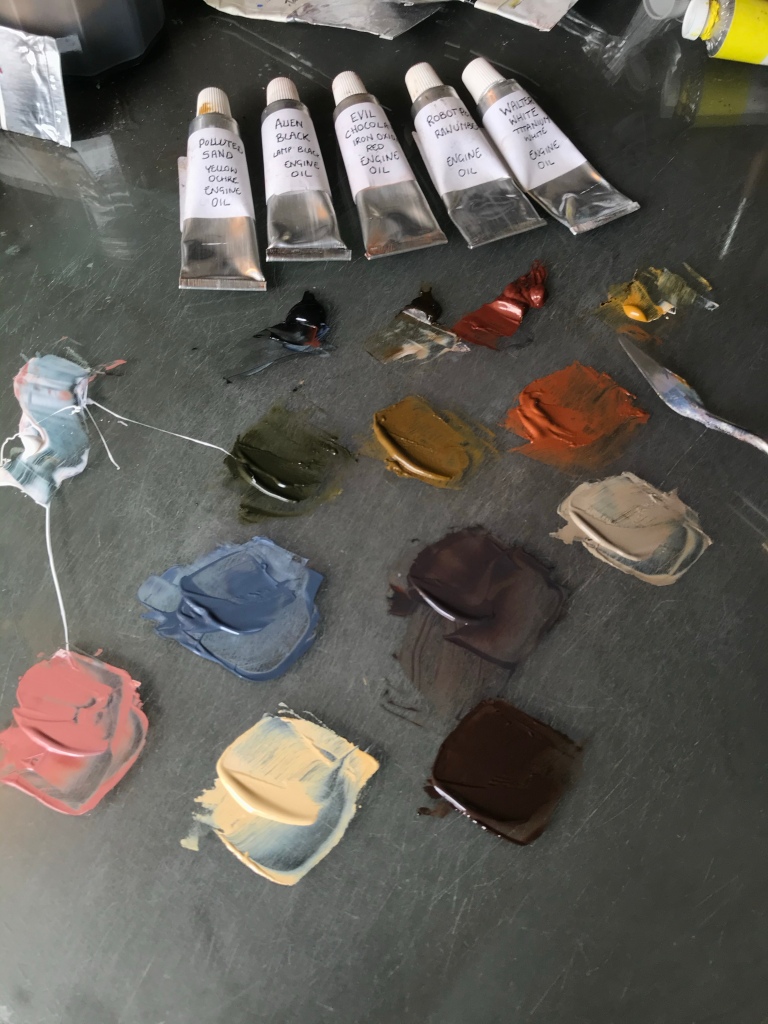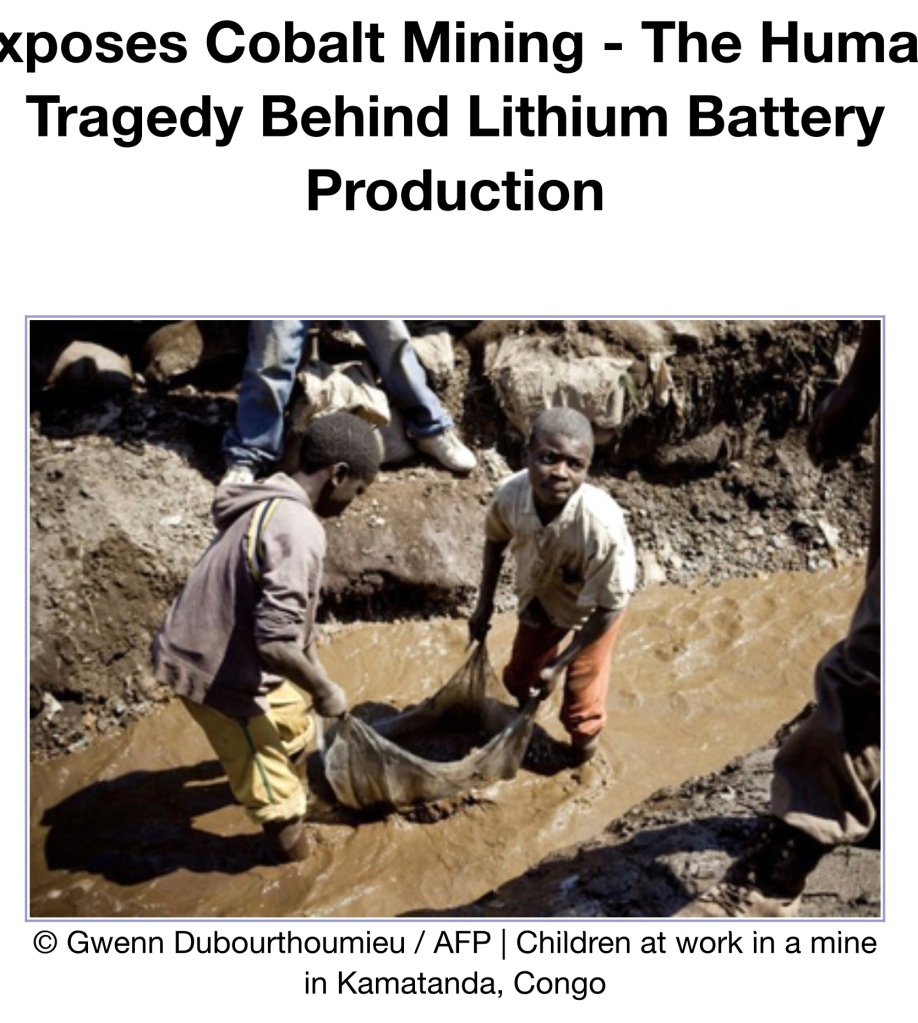
This rather awkwardly posed gentleman is Bernard Looney, the CEO of BP.
Firstly, this painting was painted entirely in what are essentially petrochemicals and rusts. I made my own paints for the project out of oxides (naturally occurring mineral/metallic rusts and some actual rust from my barbecue), soot (some chemically created for pigment and some actual soot from a BSA Bantam motorcycle exhaust) and Titanium White. All the pigments were bound with Engine Oil as a medium instead of the traditional linseed oil and all were in some way extremely challenging to paint with; mostly because the engine oil is thixotropic and may never actually dry.
The pigments I used were:
Lamp Black and BSA Bantam Motorcycle exhaust soot.
Iron Oxide Red from a food supplement company and actual rust from our old barbecue.
Iron Oxide Yellow
Iron Oxide Green/Brown
Titanium White – Now considered a carcinogen.
The binder/medium for all the pigments was Engine/Motor oil.

All pigments were either sourced at the cheapest price from eBay or made from materials laying around at home. The panel is MDF which contains, as does most MDF, formaldehyde.
What was the point of painting Bernard Looney, the CEO of BP in what is essentially pollution and petrochemicals? Well, initially I was interested in the uncomfortable relationship that portraiture in the UK has with the giant petrochemical company, in BP’s funding of the portrait award.
Some might think the portrait is an attack on BP, but it genuinely is not. I might have started out that way a little, but the more I looked into the subject, the more I realised – like so many things in life – that it was not as simple an issue as we might think. Many artists I know are deeply uncomfortable with BP being the sponsor of the portrait award. Some even laid down at the 2019 BP and had oil poured over themselves in protest, which I kinda admire, but how many of us stop to consider our own part in the use of petrochemicals? Do we realise for instance that many of the colours we routinely use and love, are derived from petrochemicals and without companies like BP we would not have the colours:
Phthalocyanine Blue and Green,
Arylide (Hansa) Yellow
Naphthol Orange or Red
Pyrrole Red
Quinacridone Magenta
Perelyne Green
Alizarin Crimson
And many others
We also use plastics in much of our studio equipment: lids, brush covers, endless bubble wrap, cotton bud stems, wipes etc. And of course plastic is present in all acrylic paints, including acrylic gesso. Our paintings are full of petrochemicals, by-products of the metal industry and also some highly questionably sourced metals like Cobalt, that is mined using child labour in some parts of the world.

Then of course there is the issue of the disposal of the residue of these paints and solvents. How many of us think responsibly when we’re disposing of these toxins? Or stop to consider the health risks to ourselves? Many artists I know flush Manganese (umbers), Cadmium, Titanium, and a whole range of other toxins down the sink when they clean their brushes. So really, how clean is our conscience when we protest about the sponsorship of BP of the National Portrait Award? A friend of mine once said “Don’t forget, whenever you point the finger at someone, three are pointing back”.
So how clean is our own house and what could we do? Well, we could consider asking our favourite paint manufacturers where they source pigments like Cobalt and other rare earth minerals. Could they perhaps consider an ‘ethically sourced’ type label for the pigments they use? Could we use alternative colours like ‘hues’ that are often colour matches for some of the more toxic genuine colours on our palette? Could we use a less toxic solvent than mineral spirits or turpentine? Perhaps a solvent like Langridge’s new Solvent 75? Or a citrus based solvent? And if we are hooked on ‘the good stuff’, are we making sure we dispose of it responsibly?
Don’t get me wrong, this isn’t a plea to let petrochemical companies off the hook for their environmental vandalism. I’m just asking all of us to see what positive changes we can make in our daily practice and to think a little more deeply about the issues involved and what we can do to effect positive change.